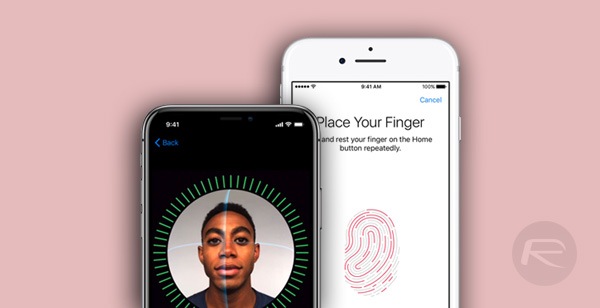Are you an iPhone user who is tired of having to physically enter passwords into websites or choose a password from your saved list in the iOS Keychain?
Well, if a new recommended standard is widely adopted then it looks like those days could be gone as Apple’s Face ID and Touch ID technologies could be used for website authentication broadly.

Entering passwords and validating credentials on websites has become a lot easier in recent years with the creation and release of password managers and companies like Apple and Google storing passwords linked against websites for easier one-touch access.
However, it’s still not exactly seamless and not a one-stop solution for an individual. This new standard, which is called WebAuthn, would essentially allow existing security devices, such as those with fingerprint readers and facial recognition scanners, to verify an account holder and log that user into the website which supported WebAuthn.
Firefox has implemented support for WebAuthn with immediate effect. Google’s Chrome and the relatively new Microsoft Edge browser are expected to follow Firefox’s lead and introduce support for the new standard within the coming months, although no real defined timescale has been provided.
Bizarrely, there is no word yet on when, or even if, Apple’s Safari browser will support WebAuthn, meaning that there is a slither of good news from an authentication perspective for Apple’s device owners built with Face ID and Touch ID, but also a hint of uncertainty considering they won’t be able to use this security hardware with website until Apple puts the work in at its end.

It’s worth noting that this standard purely exists as a “recommendation” at the moment and has yet to be officially ratified. However, having organizations like Mozilla bring support for WebAuthn with Firefox, as well as the speculation that Google and Microsoft will follow, means that it’s likely only a matter of time until it gets the approval that it needs.
However, that still leaves Apple needing to show its hand in order to adopt the new technology, and, as we all know, Apple can be notoriously slow in adopting these sorts of things. Face ID and Touch ID users who wish for a faster method of web-based authentication, let’s keep our fingers crossed.
(Source: W3)
You may also like to check out:
- Fix “You’re Trying To Access Snapchat Through A Third-Party App” Error, Here’s How
- PUBG Mobile 0.4.0 APK For Android, iOS App Global Release Is Imminent
- iOS 11.4 Beta 2 Download Expected Release Date For iPhone, iPad, iPod touch Devices
- Jailbreak iOS 11.3 Update: Security Researcher Discovers Kernel Bug In Newest Public Firmware
- iOS 11.2.6 Downgrade To iOS 11.1.2 With FutureRestore: Here’s What You Need To Know
- Download iOS 11.4 Beta 1 IPSW Links, OTA Update For iPhone And iPad
- Download iOS 11.3 IPSW Links, OTA Update Of Final Version Right Here
- Jailbreak iOS 11.3 / 11.2.6 / 11.2.2 On iPhone And iPad [Status Update]
You can follow us on Twitter, add us to your circle on Google+ or like our Facebook page to keep yourself updated on all the latest from Microsoft, Google, Apple and the Web.

